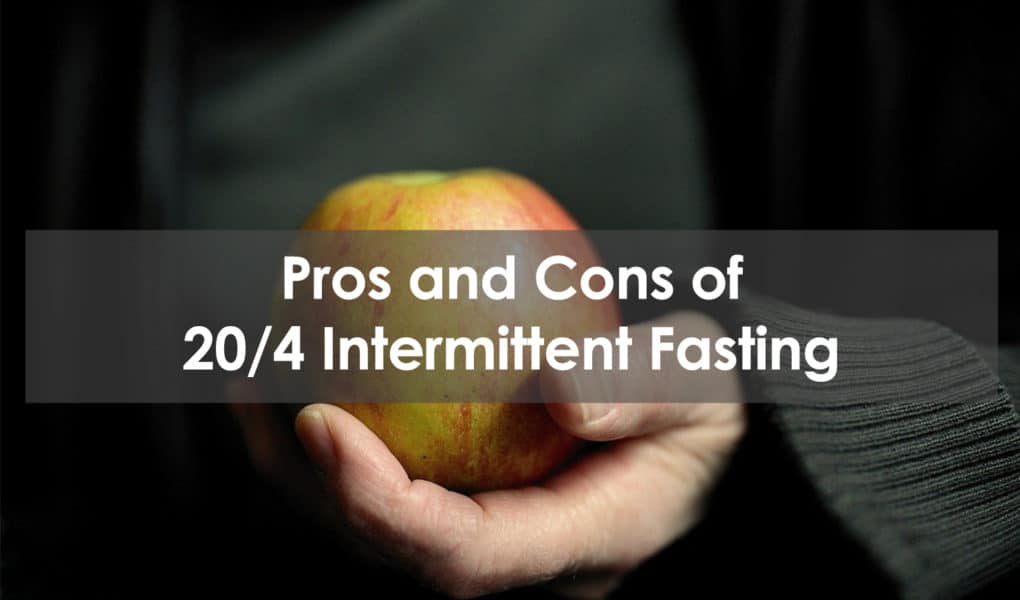Intermittent fasting (IF) is all the rage these days, but proponents of IF contend that having a fasting period is actually a callback to ancient times, when supermarkets and fast food did not exist and people had to hunt for their food.
There is even a type of IF eating pattern popularly called the “Warrior Diet.” The name is a reference to the hypothesis that ancient warriors would have not been eating all day long, but would probably have worked hard throughout the day and had a large feast at night. The main principle of this daily diet is to fast for 20 hours and eat within the remaining 4-hour window.
This article is here to help you discern the pros and cons of the Warrior Diet or the 20/4 IF diet plan.
Pros of 20/4 Intermittent Fasting
Weight loss is likely
The premise of 20/4 intermittent fasting is to limit food intake to a limited 4-hour eating window. Of course, this logically means that you will have a 20-hour fast window in which you are not consuming any calories.
The natural consequence of this eating pattern for many people will be weight loss, as it is usually impractical to consume too many calories within a 4-hour time period. Of course, if you turn your 4-hour “feeding window” into an “overeating window” (I.e., if your food choices are highly processed and hyper-caloric) it is possible that you could still gain weight on this diet by still overshooting your calorie intake.
Metabolic health may improve
There is some evidence that suggests that extending your fasting period during the day can lead to improved metabolic health. One study indicates that having a daily 18 to 20-hour fast window can improve body weight and blood sugar control. Therefore, if blood sugar levels concern you, or you have pre-diabetes, you may try working up to a 20-hour fasting period and see if this improves the situation (of course, please consult health professionals before attempting this).
Cons of 20/4 Intermittent Fasting
May not maximize muscle mass gain
If you don’t have a lot of body fat to lose (I.e., if you’re at or below 10-12% body fat as a male, or 20-22% as a female), and you have a goal of gaining quality weight in the form of muscle mass, extended fasting periods is probably not the best strategy for you.
Dr. Peter Attia indicates that as a long-term strategy, fasting for extended periods is not going to yield the best results for adding muscle mass, since adding muscle depends on balancing muscle protein breakdown (MPB — triggered by both fasting and by resistance training) and muscle protein synthesis (MPS — triggered by sufficiently high protein intake and by resistance training). Long fasting periods likely skew the balance towards MPB and away from MPS, which is not what you want when looking to build muscle.
May not be optimal for women’s hormones
If you are a woman, you will probably want to exercise more caution when undertaking a dieting phase that has you fasting for extended periods. Most of the research that has been done on intermittent fasting has been done on male test subjects, so we don’t have much data on the effects of IF in women.
But we do know that women’s health and fertility are highly impacted by food availability and sufficient daily calories. Especially if you are already relatively low in body fat, be careful when utilizing 20/4 intermittent fasting, or any calorie deficient diet. Pay special attention to the regularity of your cycle, and to your daily energy levels.
Keep in mind that you may see the benefits of fasting with more moderate time periods — a 12-hour eating window or 9-hour window may be just as beneficial in terms of improving metabolic health as the more extreme 20/4 approach.
How to do the Warrior Diet
The original Warrior Diet, as designed by former Israeli Special Forces member Ori Hofmekler, consists of 3 phases, each phase lasting 1 week: detox, high fat, and alternating high carb/high protein days.
Phase 1: Detox
During the first week, Ori recommends maintaining a 20-hour window in which you undereat. He defines this as limiting your food choices to raw vegetables (and vegetable juices), raw fruit, and protein-rich foods like cottage cheese and hard-boiled eggs. During the 20-hour undereating window, you should drink plenty of water and may have other beverages like black coffee.
When you break your fast, do so with a salad, then focus on meals of plant proteins — especially whole grains, beans, and cooked vegetables (or raw, if you prefer).
Phase 2: High Fat
During the second week, Ori recommends keeping the 20-hour fasting/undereating window the same as the first week. During the 4-hour eating window, you will not be eating whole grains or starchy carbohydrates. Instead, you will focus on dietary fat as your main energy source — especially animal protein, nuts, and cooked, non-starchy vegetables.
Phase 3: Alternate High-Carb Days and High-Protein Days
During the final phase, Ori recommends alternating 1-2 high-carb days with 1-2 high-protein/low carb days. On the high-carb days, you’ll be eating complex carbs such as corn, rice, potatoes, or oats. On high-protein/low-carb days, protein-rich meals consisting of large quantities of animal protein and cooked, non-starchy vegetables will fill your 4-hour eating window.
During each of these phases, Ori suggests not fasting altogether during the 20-hour period. Instead, he recommends having rules around what you eat, similar to what you did during phase 1: eating raw vegetables and fruits, sipping throughout the day on vegetable juices (in small amounts), and eating some protein-rich foods like cottage cheese and hard-boiled eggs.
If you decide to try out the Warrior Diet, you may choose to follow the above rules, or you may follow one simple rule — eat all of your meals within a single 4-hour period. Especially if you’re a man with excess body fat and markers of metabolic disease, some form of intermittent fasting may get you good results. Exercise caution, though, if you’re a woman, if you’re are already at healthy body weight and body fat percentage, or if you’re looking to optimize muscle gain.







